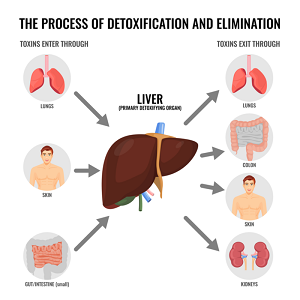
The Herxheimer reaction is understood to be a reaction of the body to bacterial toxins (endotoxins) lasting up to several days, which are produced by the therapy-related decay of a large quantity of pathogens and lead to the release of inflammatory messenger substances.
The name goes back to the dermatologist Karl Herxheimer (1861 - 1942).
The first observation of the symptoms occurred about 50 years ago during the treatment of syphilis, which at that time was treated with high doses of penicillin.
With regard to electrotherapy, this effect also occurs when the intensity of the therapy is not in line with the patient's current detoxification capacity.
Under no circumstances should the Herxheimer effect be provoked, according to the motto: "First worsening present, therapy works!"
Especially in patients with chronic diseases or in patients with a disturbed or weakened immune system, the respective therapy should be started gently. Initially short therapy duration, which can be slowly increased.
In all electromedicine, where the aim is to damage pathogens, the patient must generally be supported so that the body can eliminate the toxins from the body as a result of the bacterial lysis (dissolving of the cells) that occurs.
How to help the body to get rid of the produced toxins can be read in my manual "Viruses, Bacteria, Fungi in Frequency Therapy".
The interaction between the electromedical application without any Herxheimer reaction is quite possible and much more pleasant for the affected patient than periodic strong discomfort due to strong bacterial lysis!
As already mentioned, the treatment duration and intensity should be temporarily reduced or even suspended if noticeable lysis occurs.
The respective interplay of immune status and related excretory capacities as well as electromedical applications must always be taken into account.
The aim of a sensible electromedical application should be to avoid Herxheimer reactions altogether and to achieve clearly noticeable therapeutic progress over time.
